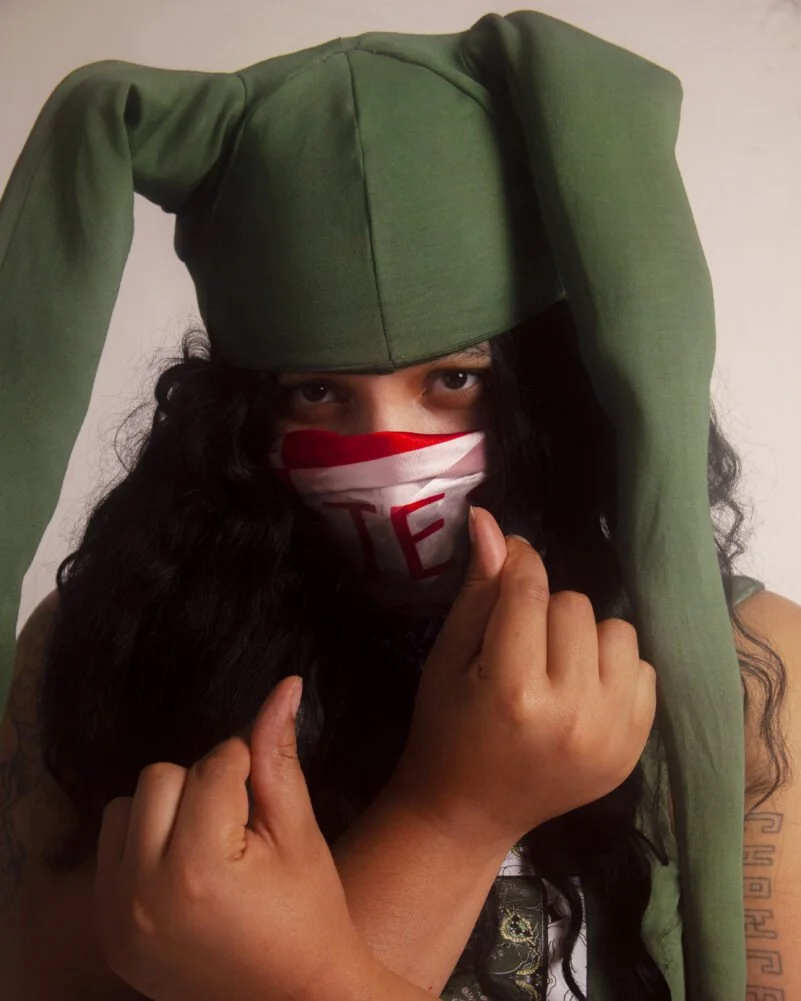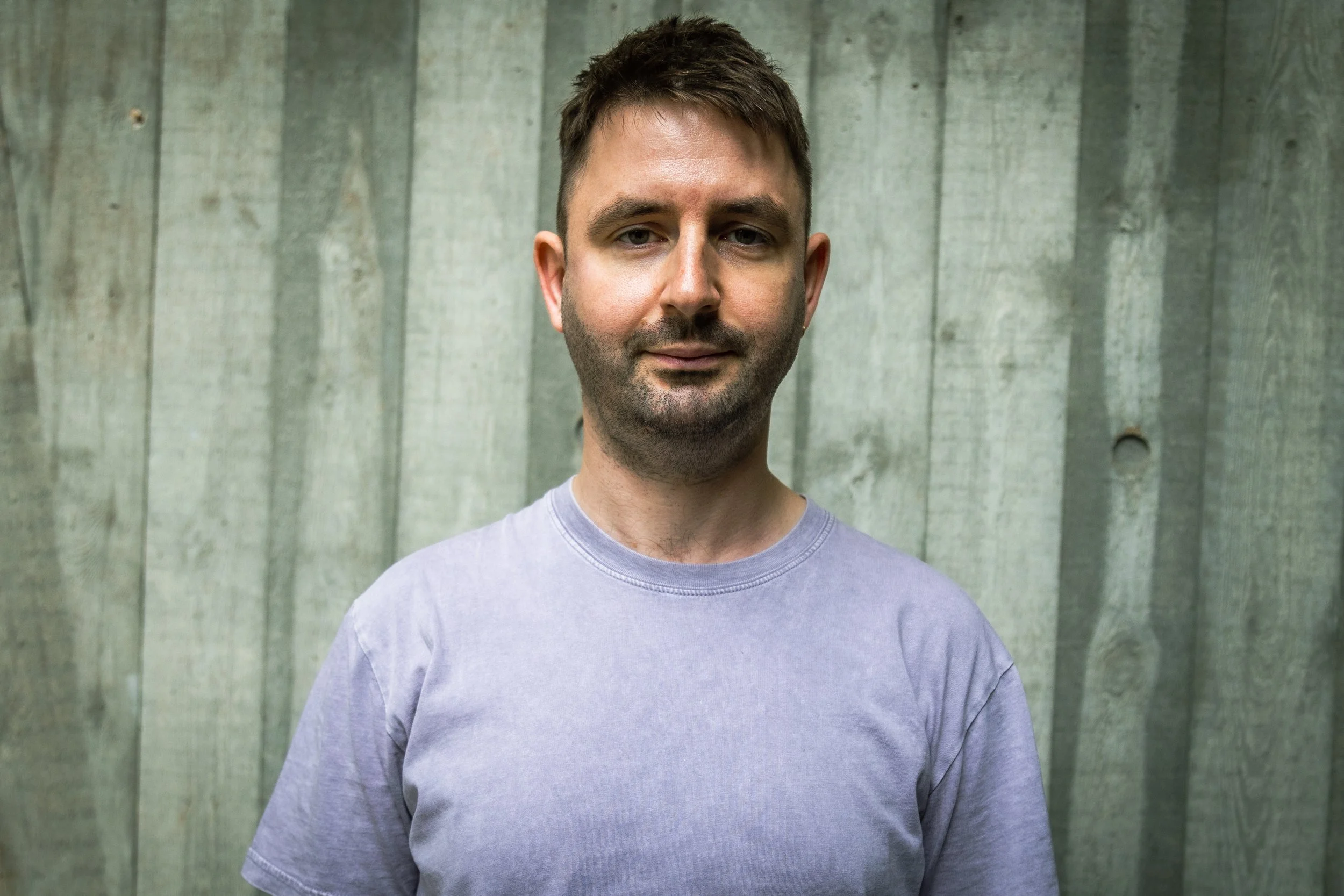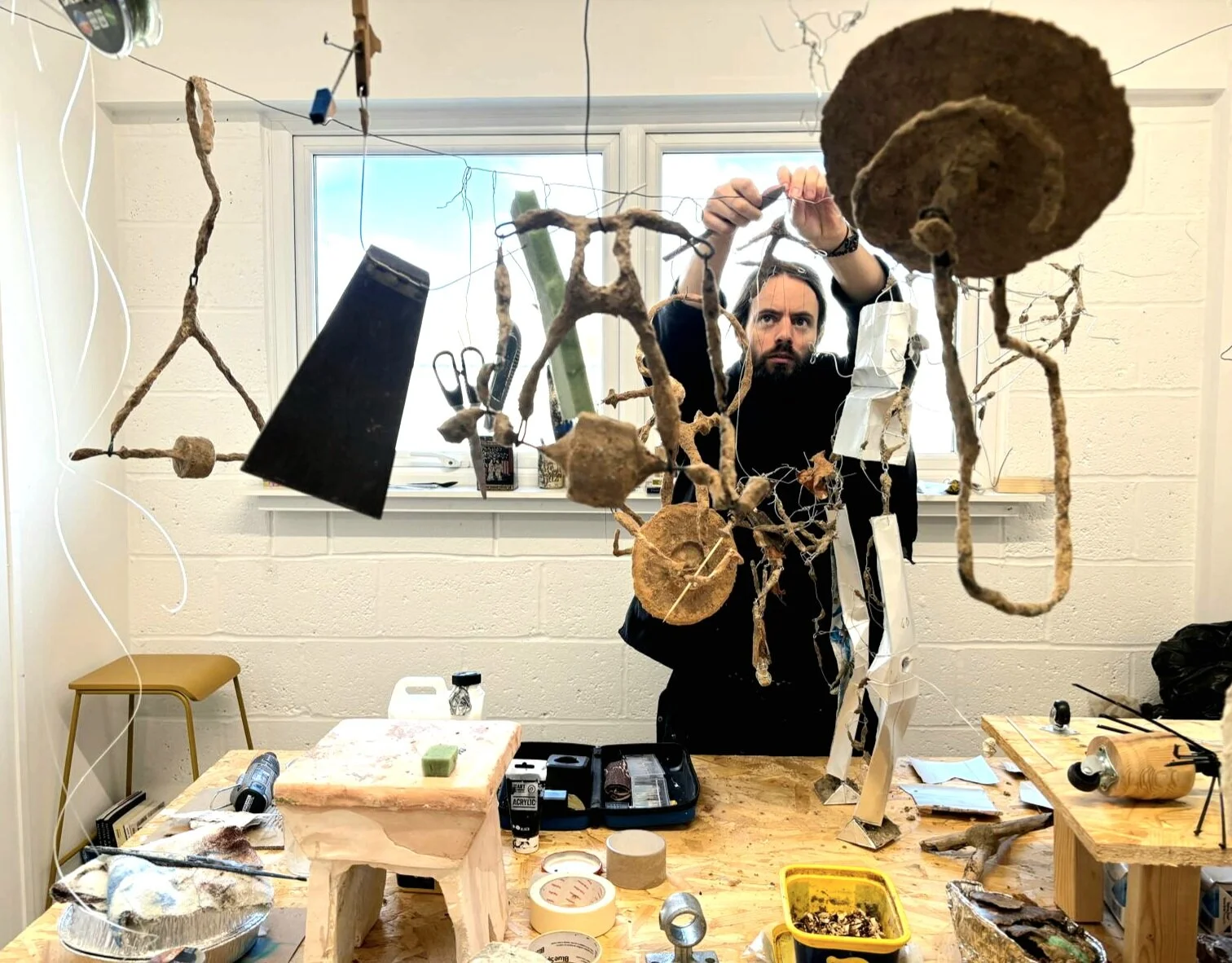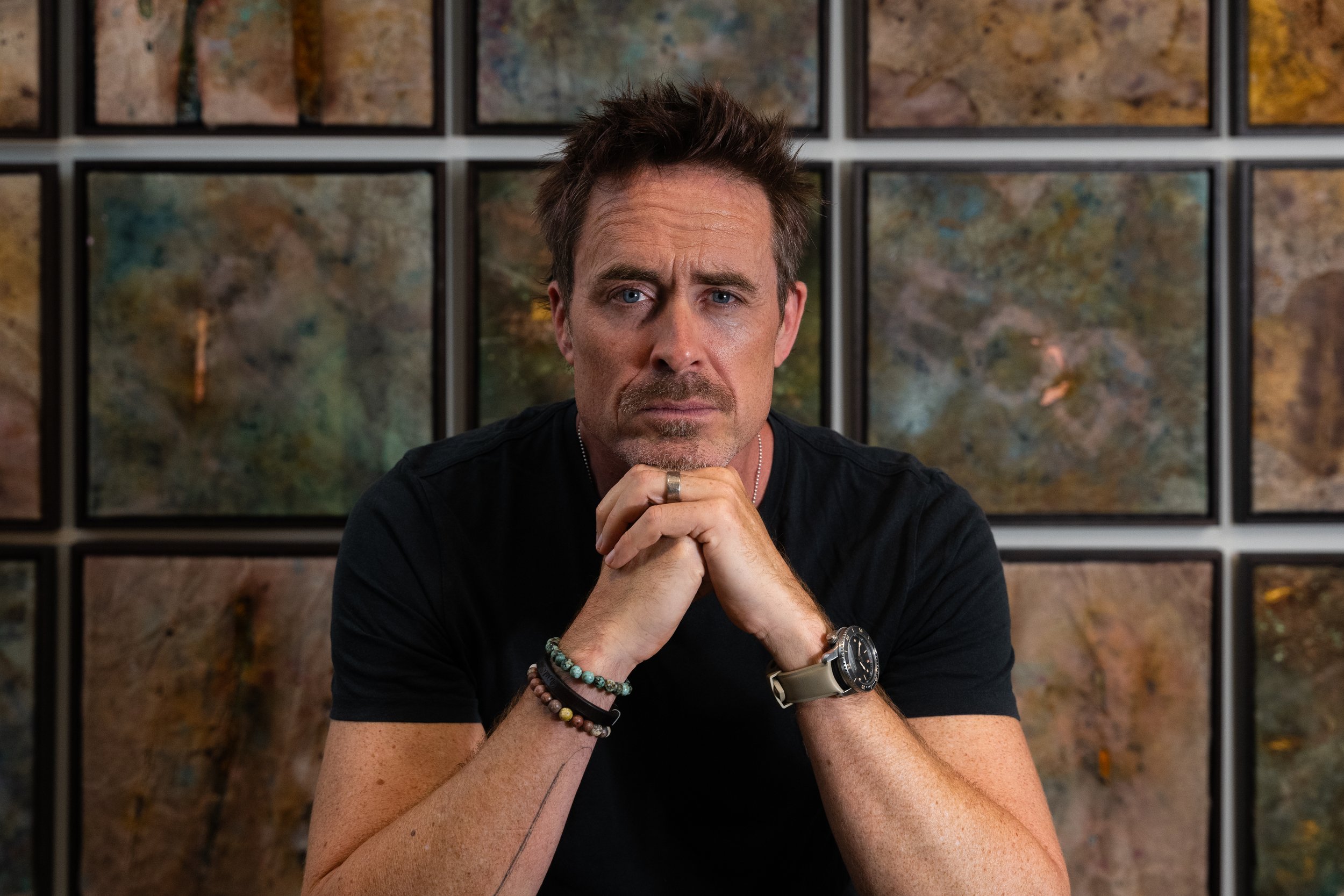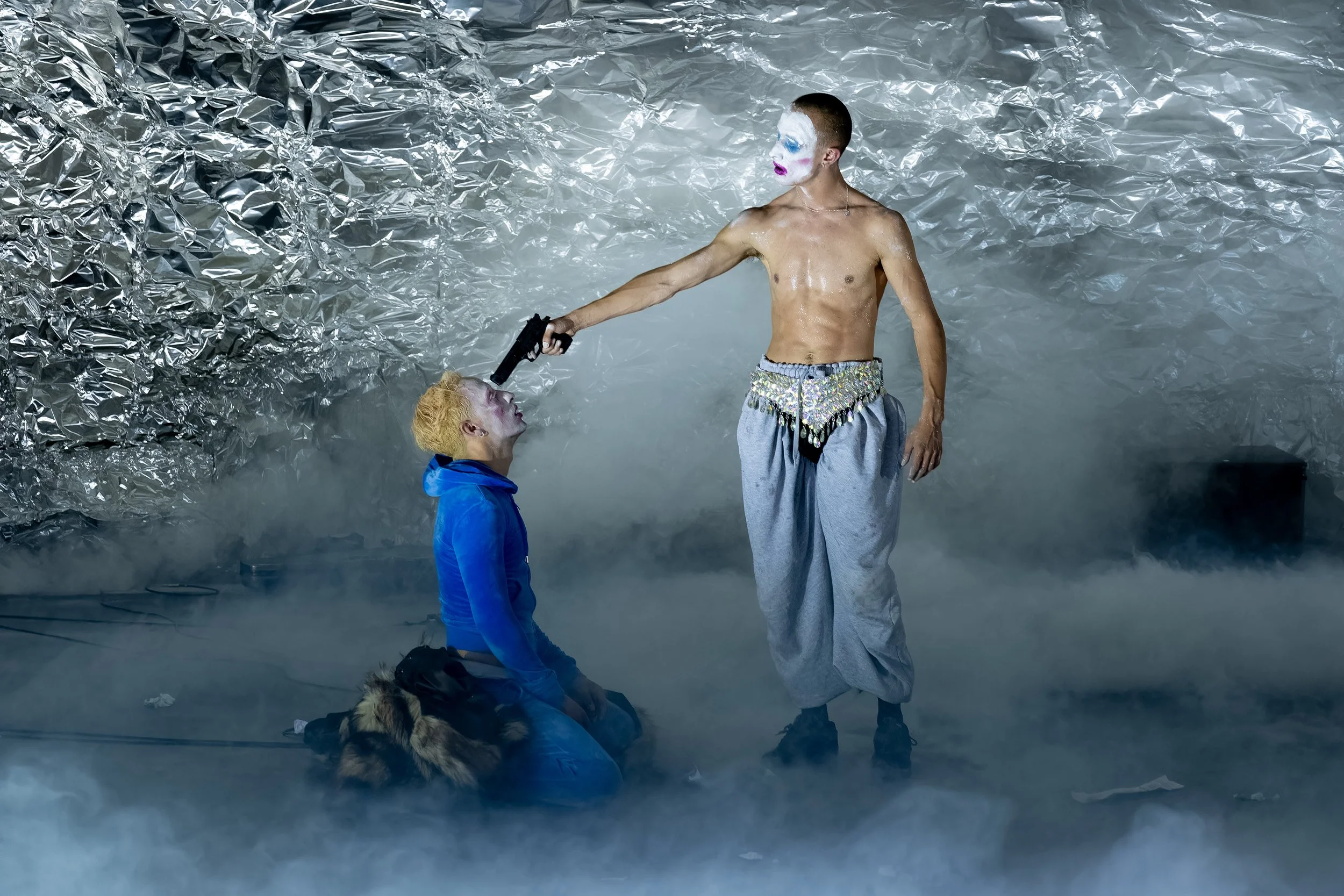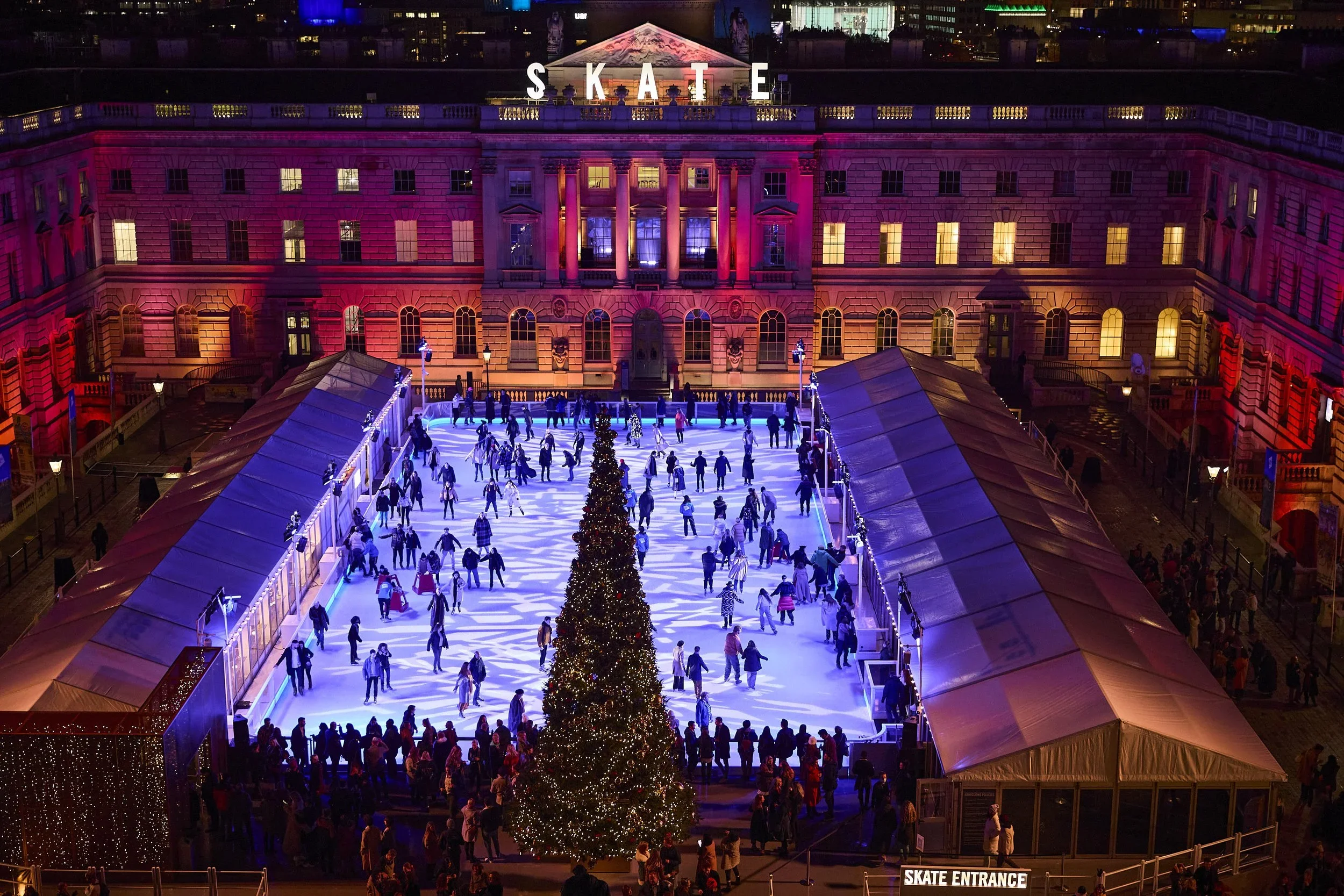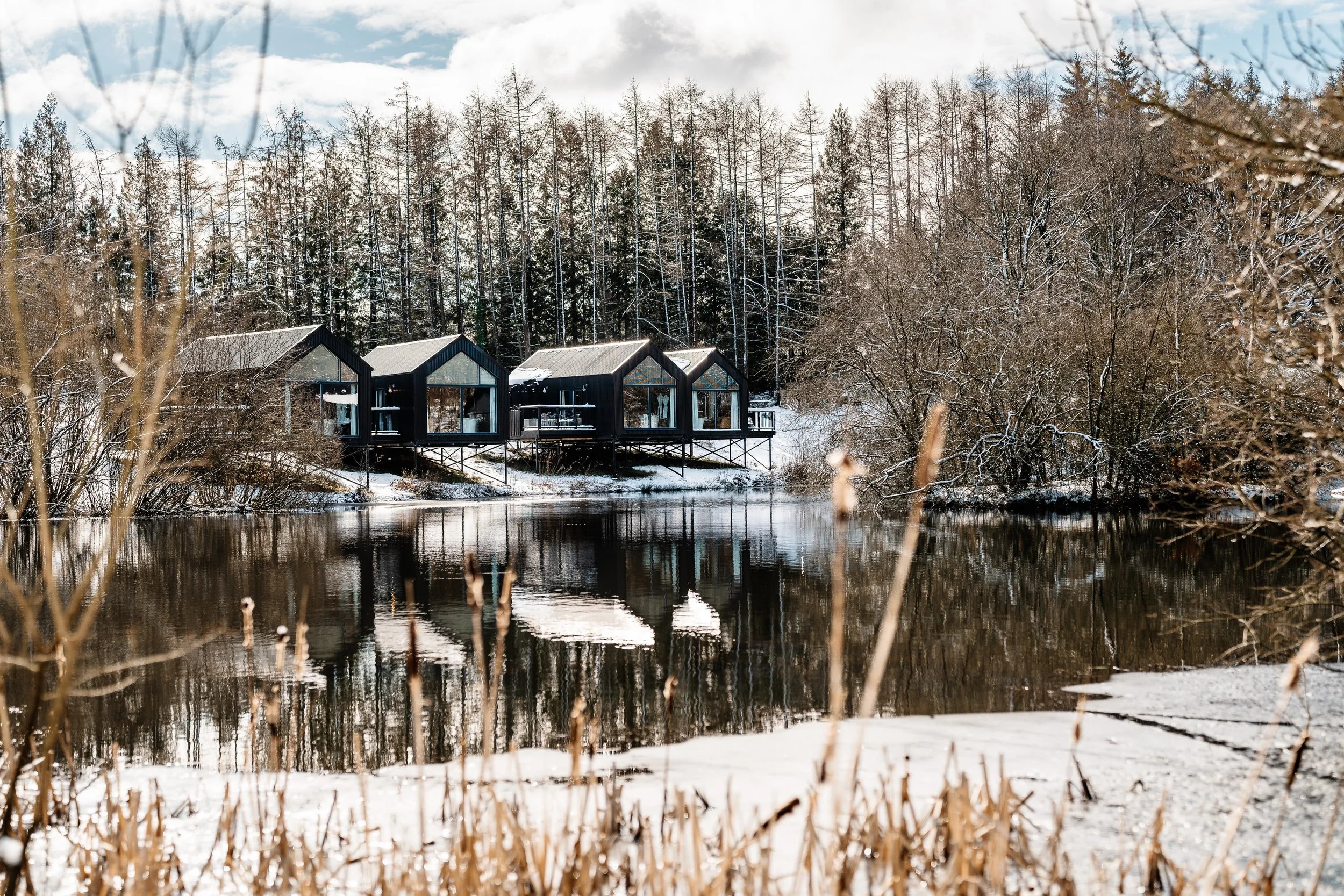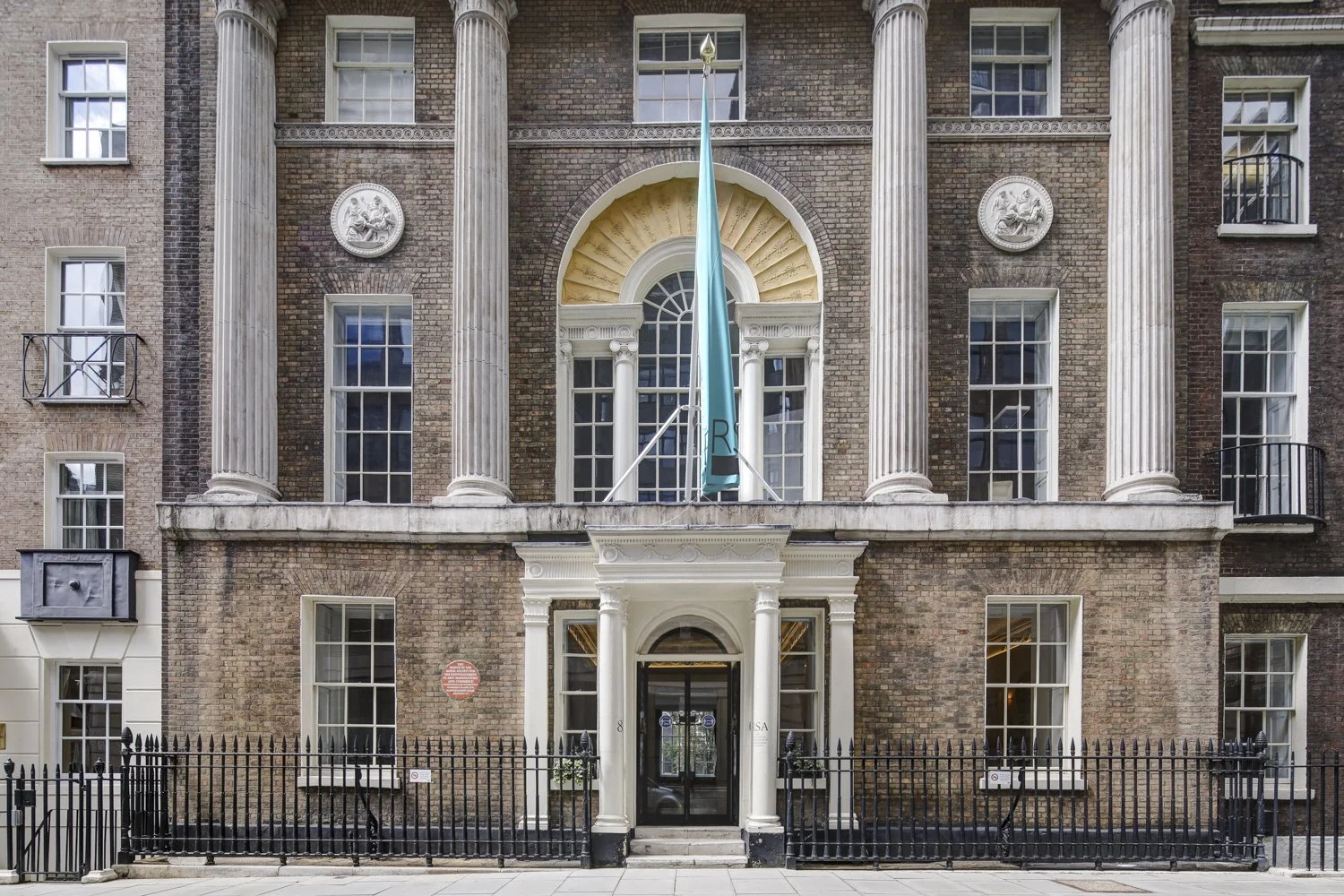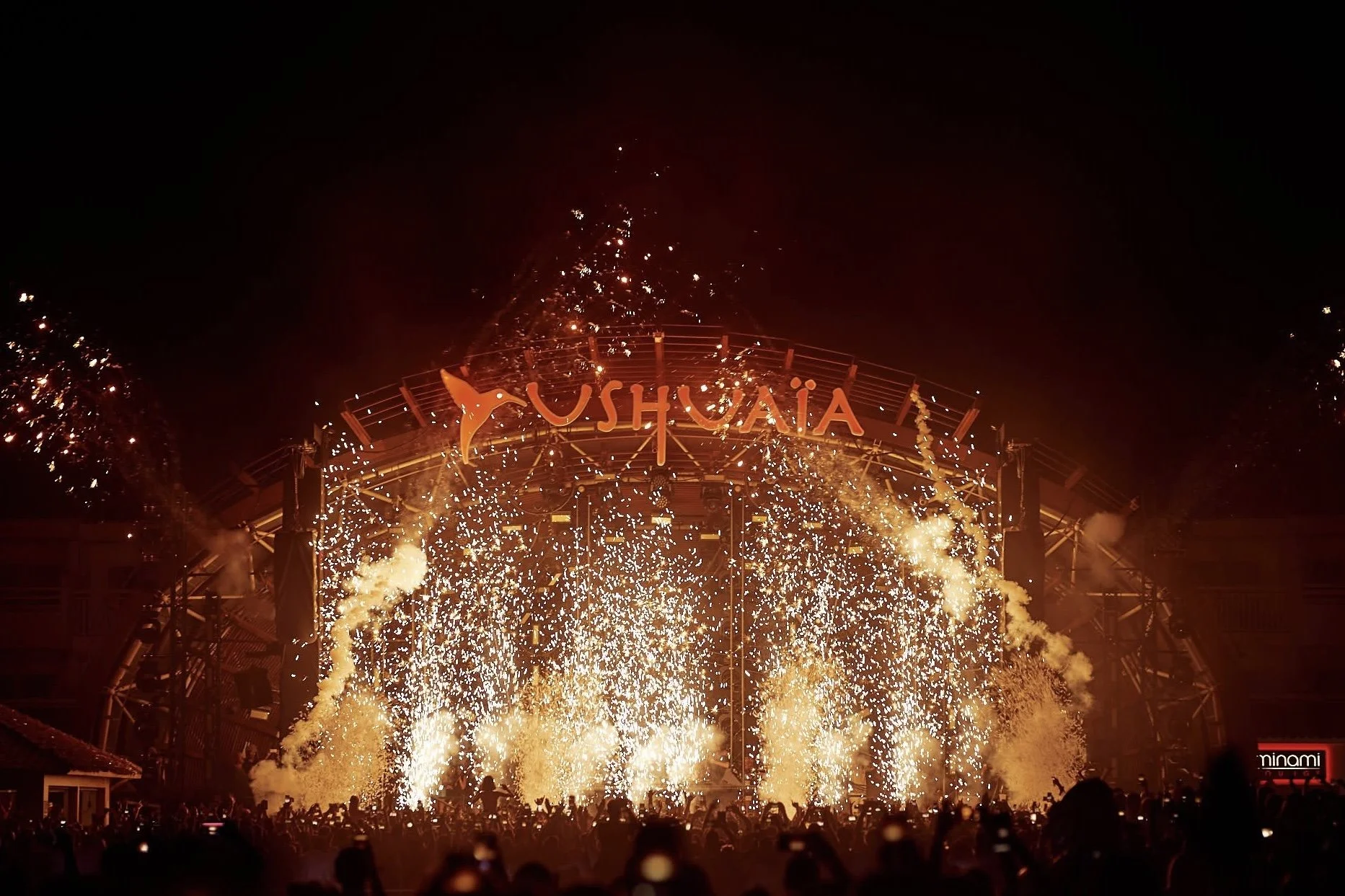In conversation with Nimrod Vardi and Claudel Goy, directors of arebyte gallery
“To us, immersive doesn’t just mean 360° projections or putting on a VR headset. It means telling a story that invites people in, that shifts their perception, and brings them along for the journey.”
- Nimrod Vardi
Nimrod Vardi and Claudel Goy, the Directors of arebyte gallery
Venturing outside the usual Central London art stomping grounds can sometimes feel like an effort. But often, it is really worth it. Case in point for arebyte Gallery, currently based on London City Island (but moving all their programming to Camden soon). arebyte explores the intersection of art, new technologies, and social sciences, pushing the boundaries of digital art. It’s immersive, but on a level that isn’t just a visual spectacle for the masses. In its varied exhibitions, arebyte showcases a wide range of digital art, from immersive installations to online experiences, exploring themes of consciousness, AI, and the impact of technology on society. Often commissioning artists to create immersive and critical works, they make a point of really ramping up on the stagecraft of a show – not just focusing on the work itself, but how it is presented.
Their bold programme on London City Island had us captured and we can’t wait to see what’s in store for its new chapter in Camden. We spoke in greater depth with the gallery’s directors, Nimrod Vardi and Claudel for more insight…
Tell us about the initial vision for the gallery. What was the scene like at the time you opened?
Nimrod Vardi (NV): arebyte is now almost 12 years old—it’s wild to think about. I started it back in 2013 as a space focused on new media and performance. At the time, we were based on the first floor of an art studio complex in Hackney Wick, which was then known as having the highest concentration of artist studios in Europe. It was such an inspiring area—artists, curators, project spaces, theatres—creativity was everywhere. Being immersed in that kind of energy really motivated me to give it a go.
Before arebyte, I’d been running another gallery for a few years, and through that experience, I realised I was more interested in the potential of non-material, time-based work—things that didn’t necessarily result in a physical object. I’ve always been into computers and the arts, and at the time, there wasn’t much happening that brought those two worlds together. arebyte was my way of creating a space for the kind of work I loved and felt was missing from the scene.
What was the very first exhibition held at the gallery?
NV: The first exhibition at arebyte was H/U/M/A/N/M/A/C/H/I/N/E by the Japanese artist Irie Takahito, who also designed our logo. Although the show wasn’t “digital” in a strict sense, it felt like a call to action—a kind of conceptual starting point for what would come next. Then, in January 2014, we hosted our first gallery residency, The Choreography of Things, with artist Choy Ka Fai, who’s actually part of the latest group show What is it Like?
That residency marked the real beginning of arebyte’s programme. It was the first step in shaping our mission: to explore, both artistically and curatorially, the evolving relationship between humans and digital technologies—and how those technologies affect our bodies, our psyche, and the way we experience the world.
Alexandria's Genesis, Dian Joy at arebyte Gallery 2024. Photo credit Devika Bilimoria. Image courtesy of arebyte Gallery
Are there any particular highlights you would like to mention from throughout the gallery’s past programme?
NV: There’ve been so many highlights over the years, it’s hard to choose. One of the earliest was launching our first online programme, Storage-un.it, in November 2014—dedicated to net.art and browser-based projects. Around that time, we also began working on Seeing-I, a project with artist Mark Farid, who proposed to live in Virtual Reality (VR) for 28 days, experiencing someone else’s life. Although the project didn’t fully come to life until 2019, it took us all over the world—conferences, residencies, even Sundance New Frontier Story Lab.
In terms of full programme years, 2017 stands out—Control was the theme, and it was packed. At that point, we were running four spaces: two in Hackney Wick, our arebyteLASER programme in Clerkenwell, and had just launched our gallery at London City Island. The year included solo and group exhibitions, a cruise on the Thames, an outdoor urban gaming festival, a low-key residency inside Westfield Shopping Centre and the first iteration of hotel generation, which featured 10 back-to-back duo shows, mostly spotlighting artists based outside of London. There were also performances, interventions, and loads more.
The Systems programme in 2020/2021 was also unforgettable. It started in a “normal” world and quickly transitioned into the chaos of COVID. In hindsight, it was weirdly on point. We kept the programme going as best we could, adapting as we went. One standout was Olia Lialina’s solo show Best Effort Network—meant to be her first physical solo in London; it opened online on the day the UK went into its first lockdown. The exhibition ended up receiving international press and helped show just how vital net.art and online presentation could be in that moment. During that year we also showed Alan Warburton’s incredible immersive piece RGBFAQ in between lockdowns, and launched REAL TIME CONSTRAINTS, an online group show that ended up sparking the development of arebyte Plugin, our tool for online exhibitions and digital content distribution.
Another unforgettable moment was SHE KEEPS ME DAMN ALIVE by Danielle Brathwaite-Shirley. The gallery was transformed into a large-scale, first-person shooter game, where visitors were tasked with protecting the lives of Black trans people across a series of levels and narrative scenarios. It was selected by Frieze as one of the top 10 UK exhibitions in 2022 and has since toured internationally, including shows in Germany and South Korea.
In 2023, arebyte was awarded National Portfolio Organisation status by Arts Council England—an incredible milestone led by our Managing Director, Claudel Goy. It marked a meaningful recognition of the work we’ve been doing within an emerging and ever-evolving artistic field, and continues to inspire us to explore new themes, engage with new technologies, and keep pushing the boundaries of both artistic and curatorial practice.
And more recently, one of my personal favourites was Homage To Quan Âm, a solo show by London-based artist Maria Than, who won our 2024 hotel generation award. The show was a touching, playful exploration of her upbringing in a Vietnamese-British-French Buddhist family, blending new technologies like Artificial intelligence (AI), projection mapping, VR, and interactive works in a deeply personal way.
There really have been so many incredible exhibitions and projects over the years—honestly, most of them are worth checking out and diving into further.
There is such a vast disparity between what some may call ‘immersive’ and the ways in which we see your shows ‘immersing’ visitors in the work and the worlds they create. Do you think audiences are becoming more educated and open to these more engaged ways of experiencing artwork?
NV: The word immersive has definitely been thrown around a lot in recent years, and I’ll admit, I’ve become a bit cynical about it. But I also get it—it’s a trendy term, part of the usual cycle of marketing language, and it fits neatly within the frenzy of the experience economy and the constant hunger for the next exciting thing. Eventually, the hype will fade, and the word will return to describing experiences that are genuinely transformative and deeply engaging.
At arebyte, we know that our audience comes looking for something different—something they’re not going to find in most other spaces. Our exhibitions are largely installation-based, and we work closely with each artist to fully transform the gallery each time. It’s not just about showing work; it’s about building a world around it.
Whether that’s removing floor tiles to create an archaeological dig site as we did in the FUTURES PAST group show, or using projection mapping to create multi-layered digital environments like in Alan Warburton’s RGBFAQ, we think carefully—together with the artists—about how to bring their ideas to life in a way that’s both meaningful and immersive.
To us, immersive doesn’t just mean 360° projections or putting on a VR headset. It means telling a story that invites people in, that shifts their perception, and brings them along for the journey.
Murthovic & Thiruda, Fragments of a Panorama, 2024. Installation view, arebyte Gallery, London. Image: Devika Bilimoria
Are there particular technologies you see progressing at the moment? Are there technologies you would like to see being developed more fully?
NV: AI is, of course, the technology of the moment. It's being used in almost every area of life now, and the art world is no exception. It’s by far the most pervasive and rapidly evolving technology right now. But like with any new tech, there's this cycle—a wave of hype, bold declarations about both its potential and its dangers—and then, after a few years, the dust settles. Only then do we really start to see its capabilities and limitations with more clarity.
That said, AI opens up a whole new realm for artists—full of opportunities, but also real risks. We need to tread carefully in how it's used. It's crucial that artists are properly credited, respected, and paid for their contributions—whether they’re shaping the aesthetics, concepts, or critical frameworks of the work. And that applies just as much to those working behind the scenes as to those in the spotlight.
I also think VR is quietly maturing into what it was always meant to be, especially within creative and artistic contexts. The hype peaked a few years ago, but the technology wasn’t quite ready. Now, headsets are lighter, the user experience is smoother, and developments in haptics and tactile feedback are bringing a new sense of embodiment to VR. At the same time, artists are starting to use it for more complex, layered storytelling. It feels like we’re finally entering the phase where VR can deliver on its early promise—not just as a tech gimmick, but as a rich creative medium.
Can you speak a little about arebyte studios and the wider ecosystem around the gallery? What is the intention with the studios?
Claudel Goy (CG): arebyte Studios are a core part of our wider ecosystem, created to support artists through affordable workspaces. We take on buildings and convert them into studio spaces. This model allows us to offer subsidised rent at a time when genuinely affordable studio provision in cities like London is becoming increasingly scarce.
We’re currently preparing to open a new site in Camden, which will host over 100 studios alongside our relocated gallery and a dedicated room for our educational programme. While the studios will accommodate a broad range of creative and tech practitioners—not just digital artists—the site will allow us to further develop the crossover between artistic and technological practices.
Our curatorial programme continues to critically explore the role of technology in contemporary society. Camden will act as a launchpad for our long-term vision of establishing London’s first permanent Digital Art Centre. It will provide a case study for how artists, creative businesses, and public programming can coexist under one roof, fostering a more integrated and dynamic ecosystem.
At a time when most immersive digital art venues are commercially led and privately funded, we see a real need for a public institution to offer critical context and actively support the development of early-career artists. Co-locating studios and our gallery programme helps us achieve this while contributing to the financial sustainability of our model through a mix of public and private support.
Are there any other particular programmes you would like to mention?
CG: One of our flagship initiatives is Hotel Generation, which we’ve run for eight years. It’s a UK-wide artist development programme supporting early-career digital artists aged 18–28, with a focus on broadening access to the digital arts and helping artists build sustainable practices.
Each year, participants are selected via open call and mentored by curators invited into the programme. They receive curatorial guidance, technical support, and practical advice to develop a solo exhibition proposal. One artist is then selected by a panel to realise their show at arebyte Gallery in London.
The programme is about more than producing work—it’s about equipping artists with the tools to navigate the digital art world and fosters a national network of practitioners working across technology, digital culture, and critical theory.
Please can you tell us a bit about the most recent show, What Is It Like?
NV: What Is It Like? is a group exhibition curated by Helen Starr which delves into the nature of subjective reality and consciousness. The show is inspired by philosopher Thomas Nagel's 1974 paper, What Is It Like to Be a Bat?, and features works by Anna Bunting-Branch, Choy Ka Fai, Damara Inglês, Katarzyna Krakowiak, Lawrence Lek, and Kira Xonorika. Each artist explores themes of embodiment, perception, and the intersection between human experience and artificial intelligence., whilst using various artistic mediums—including soundscapes, virtual reality, game engines, and the metaverse.
What is it Like? is installed in such a way that it invites the viewers into an immersive and interactive environment that challenges the understanding of consciousness.
Installation view, What Is It Like (February 2025), arebyte Gallery, London. Photo credit: Devika Bilimoria.
Have you worked with the curator / any of the artists before?
NV: Yes, I’ve worked with a few of the artists before. Choy Ka Fai was actually the second artist I collaborated with at arebyte, as part of our early gallery-residency programme I mentioned earlier. We hadn’t been in touch for a while, but I ran into him last year in Berlin, and that meeting rekindled the connection—I’ve been keen to work with him again ever since, and I really hope we can collaborate more in the future.
This is the third or fourth time we’ve exhibited Lawrence Lek, and it’s always a huge honour and a real pleasure to present his work. We also showed Kira Xonorika as part of the online project MINIMAL RITUALS, curated by Doreen E. Ríos, which was presented through our arebyte Plugin platform.
Are there any particular works you would like to highlight?
CG: The show features 6 artists from around the world, each exploring different facets of consciousness, memory, and embodiment, using various digital tools and cultural lenses.
In META Anna Bunting-Branch immerses viewers in speculative realities using a VR headset to bypass language and create a somatic understanding of the Other. Choy Ka Fai’s Unbearable Darkness blends dance, epigenetics, and motion capture to archive ancestral memory and choreographic heritage. Damara Inglês’ Fashion Cyph3r uses avatars to explore grief, co-presence, and the sense of safety in the metaverse. Katarzyna Krakowiak’s sound installation Oh no, please don’t reimagines early computer-generated poetry as an urban soundscape, blurring the boundaries between perception and reality.
In Nepenthe Lawrence Lek transforms colonial ruins into virtual game environments that evoke memory’s fragility and the emotional charge of historical trauma, and finally, Kira Xonorika’s Deep Time Dance offers a visionary future shaped by Indigenous cosmotechnicsand AI, removing binaries and imagining technologies rooted in myth, ritual, and planetary consciousness.
The works exhibited in the show interrogate what it means to experience, remember, and be—both as human and non-human entities in a technologically mediated world.
We’re really interested in the stage crafting involved in this show? Please can you tell us a bit about the concepts and technologies behind that?
NV: The exhibition design really emerged through the conversations between myself and curator Helen Starr, exploring ideas around embodiment and becoming, which led us to imagine a modular system—something that could allow the audience to actively participate in the curatorial process by physically shaping the space themselves.
I wanted the gallery not to feel like a traditional gallery when you walked in. Instead, the space appears empty at first glance—no artworks on display. But as viewers begin to move and pull the wall panels, almost like opening storage units or archive drawers, the works are gradually revealed. In that moment, the audience isn't just observing the exhibition—they’re bringing it to life. That action also serves as a metaphor for memory: the way we extract fragments from their dormant state and turn them into something visible and conscious.
The exhibition was produced and installed by Henrique Llazaro, who came from the world of Escape Rooms and interactive installation and could make our vision into reality. It is a feat of engineering, with wall and ceiling mounted tracks and wires. The installation uses Arduino and TouchDesigner to create the interactive elements. During the show we held a series of workshops, as part of our Digital Training Sessions, led by Robert Hall, teaching participants how to use Arduinos and physical computing to create interactive installations.
This kind of approach is very much in line with our broader ethos at arebyte. We’ve always aimed to challenge and expand the curatorial process—especially in relation to digital art—and to explore new ways of presenting work that are more fluid, immersive, and participatory. It’s something we’re really proud of.
Lastly, as the exhibition will travel to WRO Art Centre in Wroclaw, Poland in Sept 2025, we needed to design the show in a modular way that would be easily installed in other venues.
How have responses to the show been so far?
NV: The responses were great! One of our Instagram reels went “viral” and was seen by 10’s of thousands of people. Our followers on social media grew immensely and we've received a number of very interesting reviews
Did you hold any special events around this exhibition?
NV: On the 3 May we held a mini symposium curated by Alya Kanibelli as part of her ReForum series. This event explored how narratives around technology—and AI in particular—are constructed, whose voices remain unheard, and what alternative forms of knowledge can disrupt these power structures. It featured in-person talks and presentations by Dr. Clea Bourne, a scholar and author whose work critically examines the intersections of digital economies, communication, and social power; Choy Ka Fai, a Berlin-based Singaporean artist exploring the future of dance, techno-shamanism, and Kira Xonorika, a Paraguayan transdisciplinary artist, writer, and activist working at the intersection of futurism, myth, and decoloniality. The programme also included a recorded conversation between What is it Like? curator Helen Starr and David Chalmers, Professor of Philosophy and co-director of the Center for Mind, Brain, and Consciousness at New York University, renowned for his work on consciousness, the philosophy of mind, and the implications of artificial intelligence.
What is it Like? curated by Helen Starr ran until 4 May 2025 at 7 Botanic Sq, Leamouth Peninsula, London E14 0LG. This May, part of the exhibition will be shown at the 21st Media Art Biennale WRO, which has the theme Qualia – following which the full exhibition will be presented at WRO Art Centre 18 September – 31 October 2025. For more information visit arebyte.com





